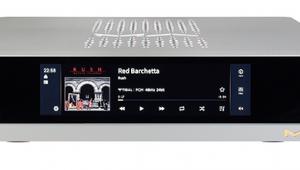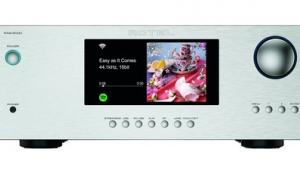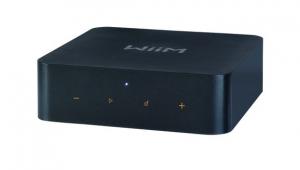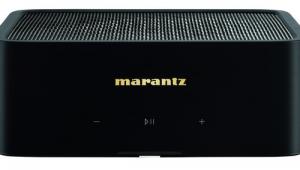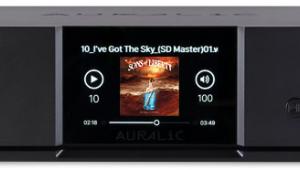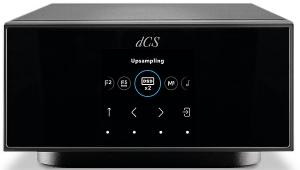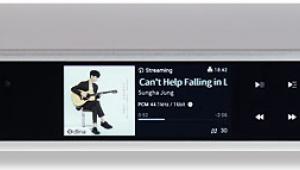PS Audio AirLens Page 2
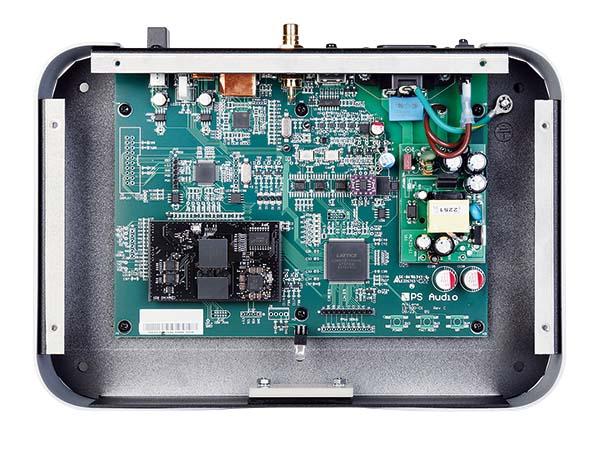
Compact PCB, with two clocks, hosts an mconnect CDM4140 network audio module that supports DLNA/UPnP, AirPlay2, Spotify Connect, Tidal Connect and Roon, and offers I2S/DSD audio output
Neither is there a PS Audio app for operating the AirLens or managing music playback. A decade or so ago this wouldn’t have been worthy of note – after all, many digital audiophiles ‘grew up’ using open solutions such as Bubble or mconnect – but it’s unusual in 2024. Audio brands both big and small now offer their own software (albeit often designed by a third party), including T+A and Lumin [HFN Apr ’24], Auralic [HFN Nov ’23], KEF [HFN Sep ’22], Matrix Audio [HFN Dec ’23] and many more. Here, though, you are pointed in the direction of Roon (the AirLens is Roon Ready), Audirvana and JRiver; third-party UPnP apps including mconnect (from the same company responsible for the AirLens’ streaming SoC); or Tidal and Spotify Connect. It’s perfectly usable in this regard, but some might expect more in the way of customised functionality.
Dip Out Of Digital
Speaking of which, on the underside of the AirLens chassis lurks a surprise. A row of eight DIP switches, a little analogue touch in a digital world, is provided for managing playback over Roon. These, explains PS Audio, let you ‘set [define] the capabilities of your DAC so that Roon will know when to downsample music’, and consist of PCM, DSD, DoP and volume control options. Again, a control app would have made this slicker, but the good news is that if used with the company’s DirectStream MK2, all the switches can be left ‘up’. One of these DIP switches also helps instigate over-the-air firmware updates for the AirLens – the alternative being the unit’s ‘FW’ USB port.
If this all means the AirLens feels a little underdeveloped operationally – and better suited to existing PS Audio customers – then the same can’t be said about its underlying hardware. The focus of this standalone streamer is to reduce the impact of network-borne noise and EMI, which PS Audio says it has achieved via galvanic isolation. The AirLens’ input and output stages are separate, with digital audio data passed to the latter ‘using only air [transformer-coupling, we assume] as the interface’ – hence the first part of the product’s name. The second is derived from the integration of the manufacturer’s low-jitter ‘Digital Lens’ clock.
There’s a surprising amount of heft to this compact, 254mm-wide unit, too, and the styling is superb (just keep a cloth handy for removing fingerprints from its black gloss top-plate). It feels well put together, down to the sturdy rubber feet that elevate it from your hi-fi shelf.
The front-panel logo changes colour to signify power status and MQA playback. A rear-panel LED shows Wi-Fi status, with connection handled by WPS; this worked faultlessly with my (Sky) router – not always a given. Ethernet was used for this review, however, with the AirLens paired with PS Audio’s DirectStream DAC MK2, running the new ‘Massive Mount’ firmware that brings measurable benefits in terms of noise and THD.





